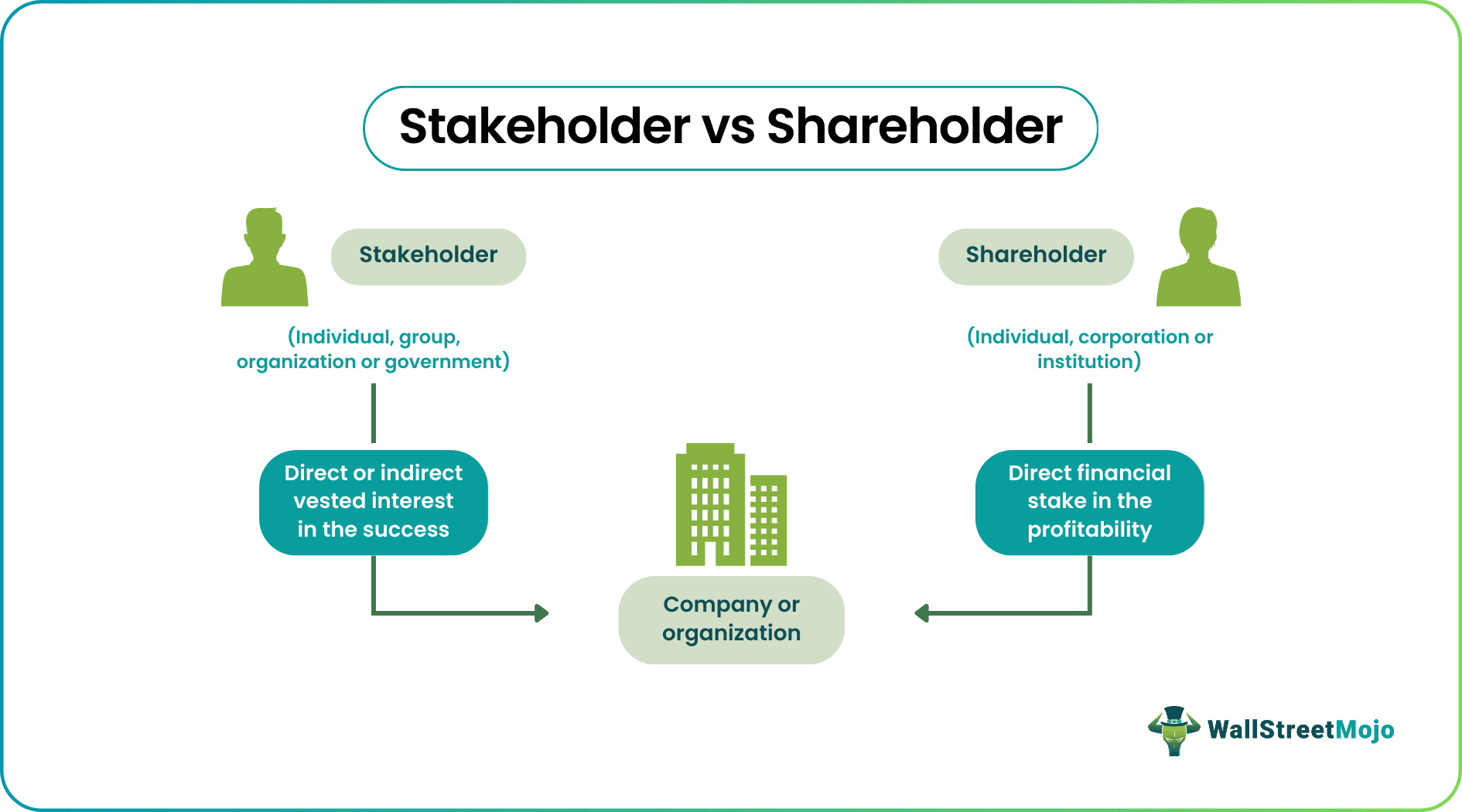Let us have a quick look at the differences between stakeholder vs shareholder:
Table Of Contents
Comparative Table
| Basis | stakeholder | shareholder |
|---|---|---|
| 1. Definition | Any individual, group, organization, or government with a vested interest in an organization’s success | Any individual, corporation, or institution buying at least one share of a publicly-traded or privately held company’s stock |
| 2. Presence | Any business, large or small, regardless of industry | Any company that issues shares |
| 3. Association | Focuses on duration and quality of service from the company and its long-term, overall performance | Relies on the stock performance, and the association might break as soon as they sell shares |
| 4. Interests | Interested in the company's success other than stock price appreciation | Having a financial interest in the stock price appreciation, dividends, and returns on investment |
| 5. Company Ownership | Has interest or stake in the company | Owns a portion of the company based on the number of shares they hold |
| 6. Effects | Directly or indirectly affect or get affected by the company’s actions, decisions, and performance | Directly affected by company’s decisions, policies, actions, and performance |
| 7. Focus | Company’s success or failure and its impact on the community | Return on investments on shares owned
|
| 8. Range | Broader concept | A type of stakeholder |
| 9. Classification | Internal and external | Preferred and common
|
| 10. Examples | Employees, managers, investors, trade associations, governments, suppliers, creditors, community groups, customers, shareholders, board of directors, etc. | Any person or entity owning a share in the company’s stock |
Who Is A Stakeholder?
A stakeholder is any individual, group, organization, or government impacting the firm's performance, i.e., success or failure, or getting affected directly or indirectly by its actions, decisions, policies, and objectives. They have some interest in the organization, and hence they contribute in their way to make the venture a success. Stakeholders may include employees, managers, investors, trade associations, governments, suppliers, creditors, community groups, customers, shareholders, etc.
When a company's performance deteriorates, it affects all of its stakeholders. For example, when the firm experiences significant losses, it begins to lay off staff. As a result, employees lose their jobs and must look for new ones to make a living.
The stakeholders have a long-term reliance on the company, and their efforts to keep it running are intertwined. For example, if a group of customers decides to abandon a brand or boycotts it for some reason, its revenue will suffer. Hence, the contribution of a stakeholder and an organization must work in tandem to ensure the latter functions smoothly.
In short, stakeholders focus on the duration and quality of service from a company and its long-term performance. It means they see a company's success as profit and its failure as a loss.
Types Of Stakeholders
Stakeholders fall into two categories:
- Internal – Those directly linked with the company or project, like employees, investors, shareholders, managers, etc.
- External – Those not part of the company but have some role in its functioning, such as customers, suppliers, creditors, labor unions, community groups, governments, etc. They may also get affected by the activities and decisions of the firm.


